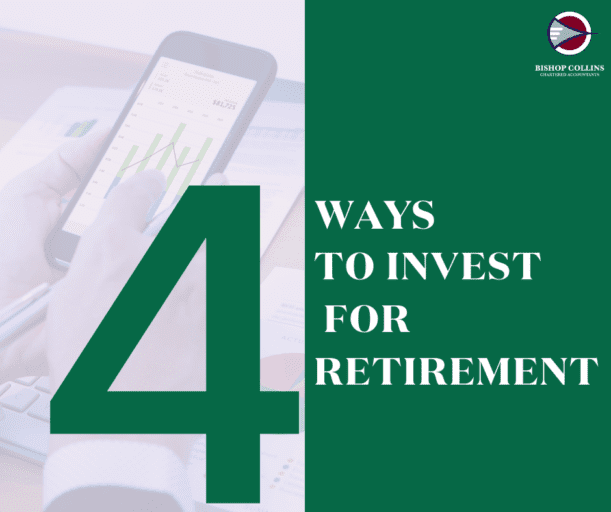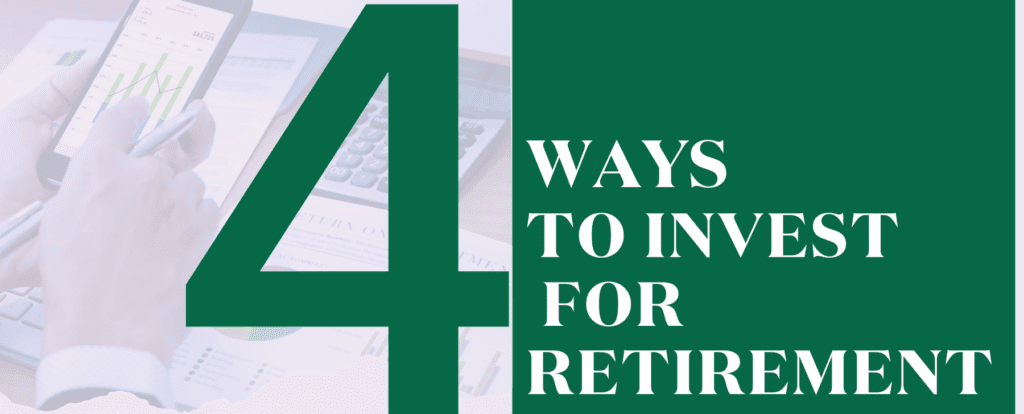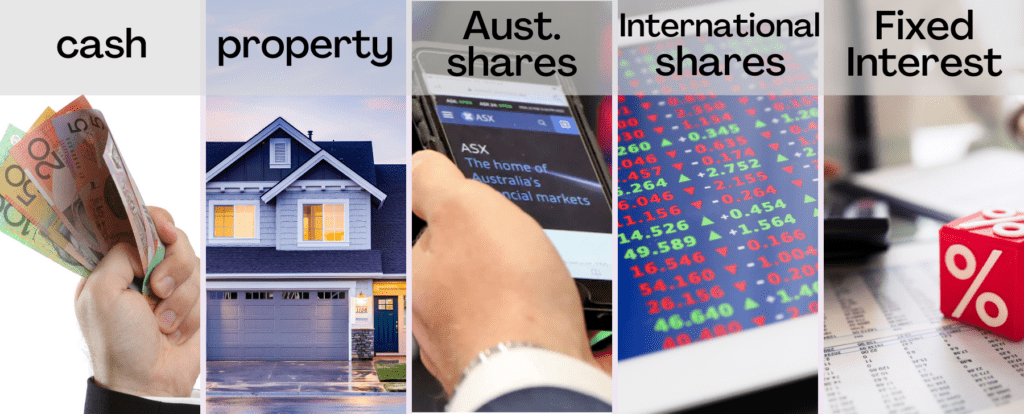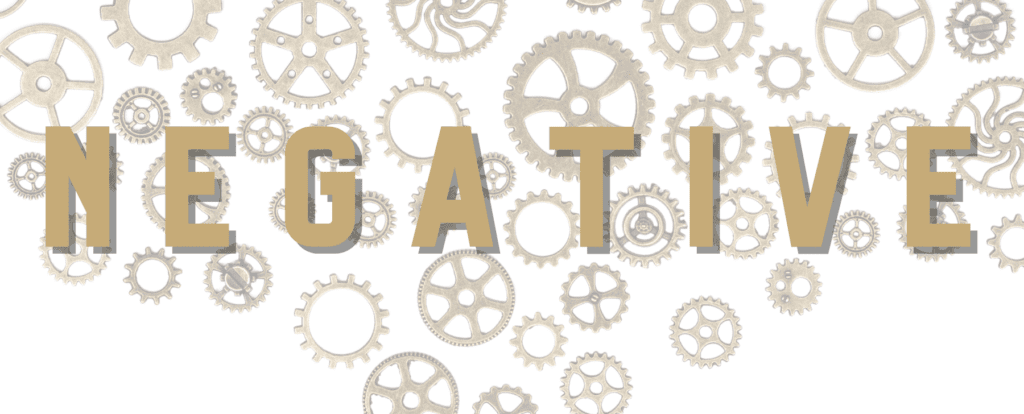
Phillip Keenan
Director
How to invest for your retirement
There are many ways to invest for retirement but breaking the solution down into some of the more common ways, makes the process less overwhelming.
Four areas needing consideration when selecting the ways to invest for retirement are asset class; direct or indirect investment; geared or non-geared investment; and frequency of investment.
Factors Influencing the decisions made in these areas are your age and risk profile. These influences will also affect your ability to achieve your retirement goals.
However, if enjoying a comfortable lifestyle in retirement is important to you, consideration of these four areas is essential.
Select your asset class or classes.
What is an asset class?
There are five categories assets are generally grouped into. These are:
- Fixed interest
- Australian shares
- International shares
- Property, and
- Cash
Performance and volatility of asset classes
General economic and market conditions impact each of these asset classes differently and therefore, some asset classes are more volatile) than others. This means that the value of the initial amount invested moves up and down more frequently. The value of cash for example is less volatile than the value of the property, which is generally less volatile than the value of shares.
In the past, we have seen this rewarding you with greater returns and therefore more money in retirement, if you invest in more volatile asset classes in the long term. This is best illustrated by the 2020 Vanguard Index Chart A1 2020_Index Chart_poster_v2 (vgdynamic.info).
This chart provides a range of interesting insights, but to illustrate the relationship between volatility and greater investment returns in the long term, you’ll note that $10,000 invested in Cash in 1990 would be worth $44,172 on 30 June 2020. The same amount invested in Australian Shares, tracking the S&P/ASX All Ordinaries Accumulation Index, would be worth $130,457 on 30 June 2020. Remarkably, this result has been achieved despite periods of recession, war, the US subprime crisis, Brexit, and a COVID-19 pandemic.
The asset class or classes selected will affect how much money you will have when you retire. Your level of exposed volatility will depend on which asset classes you choose to invest in.
Diversification amongst your asset classes
In simple terms, the concept of diversification is best described as “not putting all your eggs in one basket”. It’s a risk reduction technique designed to minimise risks, by either investing in multiple asset classes (e.g. fixed interest, property, and Australian shares) and/or investing in multiple assets within an asset class (e.g. multiple investment properties).
Diversification can’t manage all risks. The most recent example of a non-diversifiable risk within a listed share portfolio was the negative impact of the COVID-19 pandemic on global share markets.
Diversification is important for more risk-averse investors seeking investment returns with less volatility.
Select your investment method: Direct or indirect.
Direct investment for retirement.
An investor may choose to buy a specific asset such as a property or a listed share. This is an example of a direct investment method because they control the choice of which asset they’ll buy and sell and the timing of these decisions. Any costs associated with these decisions are limited to their time and the usual costs associated with transacting in these markets (stamp duty, conveyancing fees, brokerage/agent fees, income tax etc.). The decision may often be made by the investor and any inherent bias, knowledge, and awareness that the investor holds constrain their decisions.
Indirect investment for retirement.
Alternatively, an investor may choose to invest indirectly. Managed investments are an example of an indirect investment method as your investment is typically made into a fund controlled by a fund manager. Your investment in a managed fund is pooled with other investor’s funds and invested in predefined asset classes in accordance with a product disclosure statement. Investments in managed funds can be readily converted into cash and your investment is managed by a team of experts. The fund manager will deduct a fee for managing and administering the fund.
If you have the expertise to manage your investments and wish to retain control, it’s likely that you’ll prefer a direct as opposed to an indirect investment method.
3. Select your gearing strategy.
Gearing refers to borrowing an amount of money to invest. It will increase any gains or losses. If the expenses from owning the asset are greater than the income earned from the asset, you can use the excess to reduce your other assessable income. This provides you with a tax benefit and is referred to as negative gearing.
To illustrate the point and using the same assumptions relied upon in the 2020 Vanguard Index Chart, $10,000 invested in Listed Property in 1990, tracking the S&P/ASX 200 A-REIT Accumulation Index, would be worth $95,395 at 30 June 2020. If you borrowed $10,000 and invested $20,000 ($10,000 of your own money and $10,000 borrowed) then your investment would be worth $190,368 on 30 June 2020 (if you had the capacity to repay the debt from other income). The value of the investment on 30 June 2020 increases by $95,395 at 30 June 2020 for each additional borrowing of $10,000.
Whilst gearing has the potential to magnify gains it also has the potential to magnify losses. This increases your risk associated with investing because it requires you, the investor, are required to finance repayment of the debt even if the investment decreases in value or their personal circumstances change. Gearing is not for the risk-averse investor.
4. Select the frequency for investment and reinvestment: Regular or Irregular.
To get the most out of your investments and maximise the amount of money you have accumulated for retirement you should understand the power of compounding. A compound return is the average return over a period (expressed as a percentage). This is maximised by earning and reinvesting income on not only your initial investment but also on the ongoing investment returns. The longer the period of investment, the greater the power of compounding.
To illustrate the point and using the same assumptions relied upon as above, $10,000 invested in Listed Property in 1990 tracking the S&P/ASX 200 A-REIT Accumulation Index would be worth $95,395 on 30 June 2020. This means that the compound return for the total period is $85,395. This is $61,215 more than the amount of money that you would have accumulated on 30 June 2020 if you didn’t reinvest the income.
Interestingly, if in addition to the initial deposit of $10,000, you had also contributed $100 per month toward this same investment, your investment would be worth $223,236 on 30 June 2020. This is $127,841 more than the amount of money that you would have accumulated on 30 June 2020 if you had just invested the initial deposit of $10,000 and reinvested the earnings.
In short, regularly investing, beyond your initial investment, over a long-term period, is the key to maximising your wealth. The power of compounding should be working for you.
Now you understand how to invest for retirement, the next steps are to consider your risk profile, formulate an investment strategy and select an appropriate structure for investment. These elements are beyond the scope of this article but are just as important as deciding how to invest for retirement. Your accountant can help you with this process.







